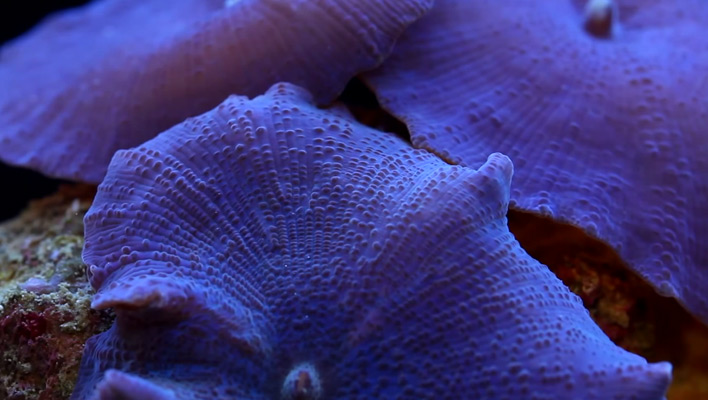Some of the most beautiful creatures in this hobby are neither rare nor difficult to keep but get glossed over by experienced reef aquarists because they are not the “latest and greatest” coral specimens that landed on our shores. So today, I want to talk about Discosoma mushroom corallimorphs because they are both excellent for beginners and stunning to the eye.
Excellent beginner coral
First off, Discosoma are corallimorphs, not true corals. They share traits in common with both corals and anemones yet are distinct enough to warrant their own classification. What does this mean in terms of care? Nothing really. Discosoma are some of the easiest additions to our reef tanks. They are tolerant of a wide range of tank parameters, making them an excellent addition to almost any saltwater aquarium.
In fact, they sometimes find a home in fish-only type aquariums with fish that are not considered reef safe, such as groupers, angels, and lionfish. This is because the corallimorphs can survive in high-nutrient conditions typical in fish-only systems with large messy fish. Most corals struggle in high-nitrate tanks.
Some of the most beautiful fish in the hobby cannot be kept in reef aquariums because they eat coral. Most fish, however, do not find mushrooms appetizing. Even reef fish that are notorious corallivores, such as butterflyfish and angels, do not go out of their way to eat mushrooms. If you have a fish-only tank and miss corals, consider trying a few mushrooms.
Care tips
While Discosoma mushrooms are tolerant of a variety of tank conditions and tank mates, there are some systems that will allow them to thrive better than others. Lighting should not be too intense. Discosoma that are over illuminated can form oxide radicals in their flesh that resemble white tumors. Here at Tidal Gardens, we keep them in lower light settings, under 100 PAR. These mushrooms can change color depending on the light provided, so there is some room to experiment with different lighting profiles as long as the polyp is not showing signs of distress.
As for flow, we have found that the lower the flow, the better. Some of the best extension is achieved in near-stagnant water. The other benefit to lower flow is providing an opportunity for mushroom polyps to attach if they ever get dislodged. This is particularly important when propagating Discosoma.
Propagation
If you are interested in propagating coral, Discosoma are among the best corals to make an initial attempt with. They heal well from cutting and grow quickly thereafter. The trickiest aspect to mushroom propagation is reattaching them once they are cut. Neither rubber bands nor glue will do the trick unfortunately. Mushrooms are escape artists that can easily foil attempts to directly hold them down on a substrate. What we like to do is make sure each cutting is attached to a piece of substrate and glue that down to a larger piece in the aquarium.
Conclusion
In summary, Discosoma are beautiful beginner corals that are well suited to a variety of reef tanks. They are very colorful, and many have interesting patterns as well.



